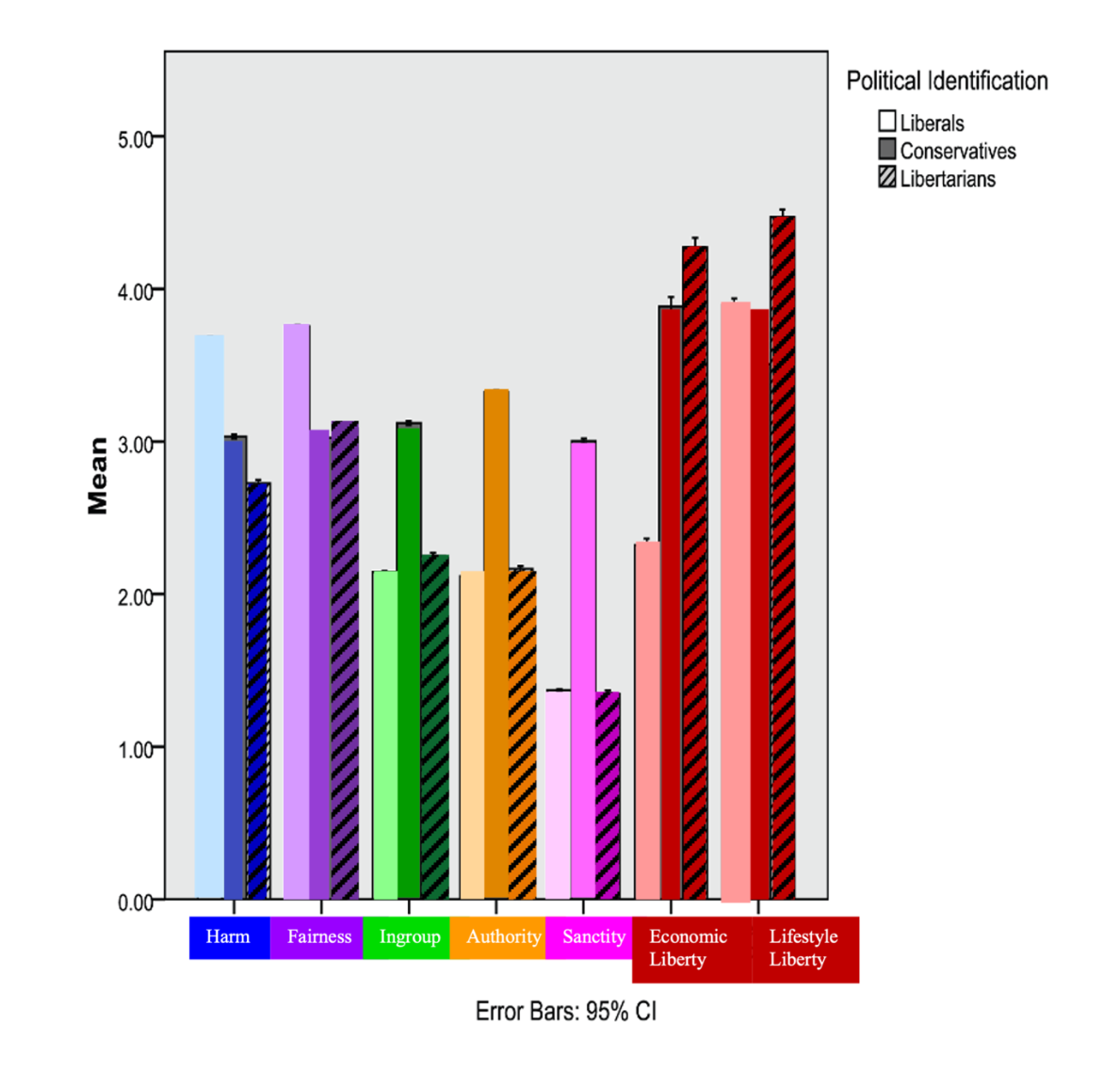*Disclaimer: Graphics are adapted from Haidt and Joseph 2004 and Iyer et al, 2010
I mentioned in my last post that Moral Foundations Theory (MFT) is the most compelling explanation I have ever encountered for the differences between liberals, conservatives, and libertarians. But as useful as it is, MFT is overwhelming and a bit academic. There’s no way around that—probably because it attempts to categorize all of the messiness that is human behavior.
Rather than going piece by piece, I’m just going to rip the band-aid off and unload everything all at once.
There are 6 foundations in total. Each is a response to a recurring evolutionary problem. For example, how do I know that you won’t screw me over if I help you? This is the basis of the fairness foundation. It motivates us to gossip about, punish, and avoid cheaters. The table below illustrates each foundation.
Moral Foundations Table
Adapted from Haidt and Joseph 2004

Phew. You’re almost there. One more graph and you’ll be ready to single-handedly solve America’s polarization.
Now we know how the foundations came to be and what purpose they serve. What’s missing is how much the different parties value each foundation in relation to each other. This is (arguably) the most useful part of MFT as it reveals the tradeoffs each side is willing to make to promote their preferred issues. We’ll discuss this more in future posts, but the following graph combined with the table above is your “Rosetta Stone” for understanding politics.
Moral Foundations Graph
Adapted from Iyer et al, 2010
*Note: sanctity = purity

You made it.
This will all make more sense with practice. Once you get the hang of it, you may even come to understand your conservative uncle (or liberal son) and why they keep acting like such hypocrites.

.png)